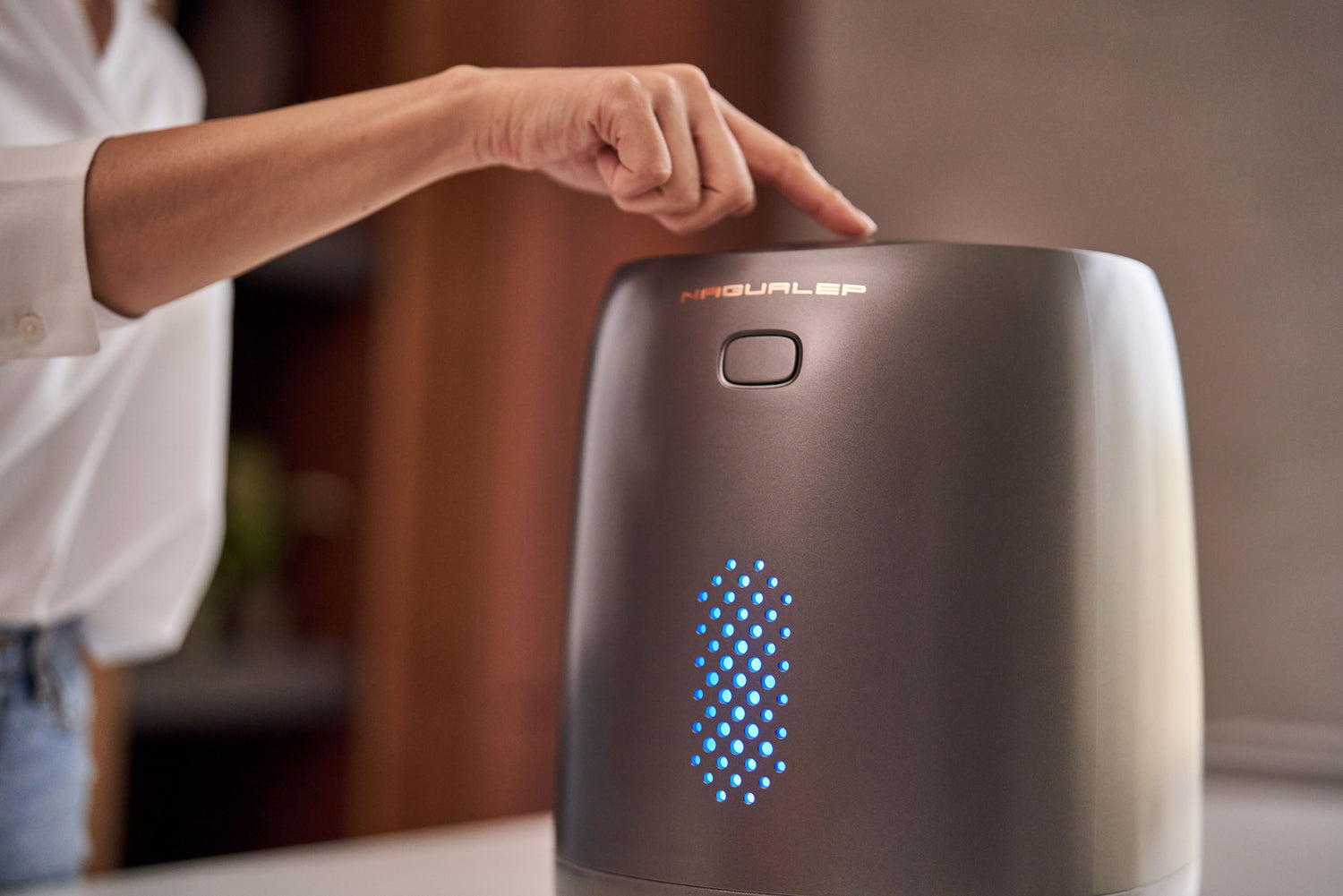Analysis of the market status and development prospects of China's food waste treatment industry in 2020, the market size of more than 400 billion can be expected in the future.
The household kitchen waste disposer developed by Nagualep Company can really solve the problem of food waste disposal from the source. The organic matter after grinding and drying can be reused to become organic composting raw materials for plants, turning waste into treasure. Products that comply with our national and even global policies concerning carbon emission reduction have broad market prospects.
The following is the relevant information on the current situation of food waste in our country:
China's domestic waste is increasing year by year, and kitchen waste accounts for the majority
From 2013 to 2018, the production and disposal of municipal solid waste in my country increased year by year. According to the “Annual Report on the Prevention and Control of Solid Waste Pollution in Large and Medium Cities in China in 2019” published by the Ministry of Ecology and Environment in December 2019, in 2018, 200 large and medium The amount of municipal solid waste generated was 21.473 million tons, and the amount of disposal was 21.289 million tons, with a disposal rate of 99.4%.
From 2013 to 2018, the compound growth rate of my country’s municipal solid waste production was 5.54%, and the compound growth rate of municipal solid waste disposal was 5.98%. According to forward-looking calculations, in 2019, my country’s municipal solid waste production was about 223 million tons. The amount is about 222 million tons, and the disposal rate of domestic waste has also been further improved.
In our country food waste treatment is characterized by sanitary landfills, increased incineration treatment, and decline in compost treatment. From the perspective of the distribution of solid waste treatment plants, solid waste treatment capacity, and solid waste treatment volume in my country in 2018, sanitary landfills account for About 50% of all waste disposal methods, but due to the shortage of land and secondary pollution, the landfill has already become a bottleneck.
Especially in some economically developed provinces such as eastern my country, the population density is high, which determines that in the future, in these areas, garbage incineration will gradually become the main method of garbage disposal. In 2018, the proportion has gradually increased to about 45%. With the commissioning of the incineration power generation project, the incineration treatment rate is expected to reach about 54.5%.
In November 2019, the Ministry of Housing and Urban-Rural Development issued a new version of the "Domestic Waste Classification Mark". In the new standard, the Chinese government has unified food waste, kitchen waste, or "wet waste" as kitchen waste in response to differences in implementation areas.
Under the tide of waste sorting promoted by Chinese national leaders, the treatment of kitchen waste will become the focus of the Chinese government's waste treatment work, and the kitchen waste treatment industry will receive extensive attention in the implementation of waste sorting.
- Kitchen waste is mainly filled with processing technology
In the field of domestic waste treatment, my country is still in its infancy. The imperfection of the waste classification system and the limitation of the technical level make my country's waste treatment still mainly based on landfill. However, landfill treatment has many defects such as large land occupation area, secondary pollution, explosion and collapse, and areas with high population density, especially the economically developed eastern provinces, have encountered bottlenecks in landfill treatment methods.
Especially as the population increases and the scale of the economy expands, land resources will become increasingly scarce, and the “neighboring effect” of residents will also increase day by day. Site selection becomes an insurmountable threshold for landfill disposal.
Composting treatment has high requirements for the content of organic matter in the waste, and organic waste usually accounts for less than one-third of the total waste, which restricts the future development scale of composting. The harmless treatment of garbage incineration is more thorough, especially for combustible carcinogens, viral pollutants, and highly toxic organic substances. Incineration is almost the only effective treatment method.
Incineration treatment can reduce the volume of garbage by 90% and the weight by 80%-85%, and the volume reduction effect is obvious. In addition, the heat generated by garbage incineration can be recycled and used to generate electricity or heat, and the ash after incineration can also be used to produce cement and bricks.
Considering the principles of reduction, resource utilization and harmlessness, the many excellent characteristics of waste incineration power generation are more in line with the objective reality of the shortage of land and energy in modern society. Therefore, the society's increasing environmental quality requirements will eventually be manifested as a major driving force for the development of the waste incineration power generation industry.
Currently, about 50% of the food waste treatment in China is landfilled, about 38% is treated by incineration, and the rest is treated by high-temperature composting, microbial treatment, or anaerobic digestion.
In the future, our Nagualep kitchen food waste disposer may replace about 50% of the kitchen waste landfill treatment, which can not only reduce the garbage classification, recycling, transportation, landfill, etc. before the landfill of the kitchen waste. The labor and logistics costs can also reduce greenhouse gas carbon dioxide emissions. The Nagualep kitchen garbage disposer was born because a group of tiny people have a common mission and vision, just to protect our common earth and return a home of blue water and blue sky to future generations.




